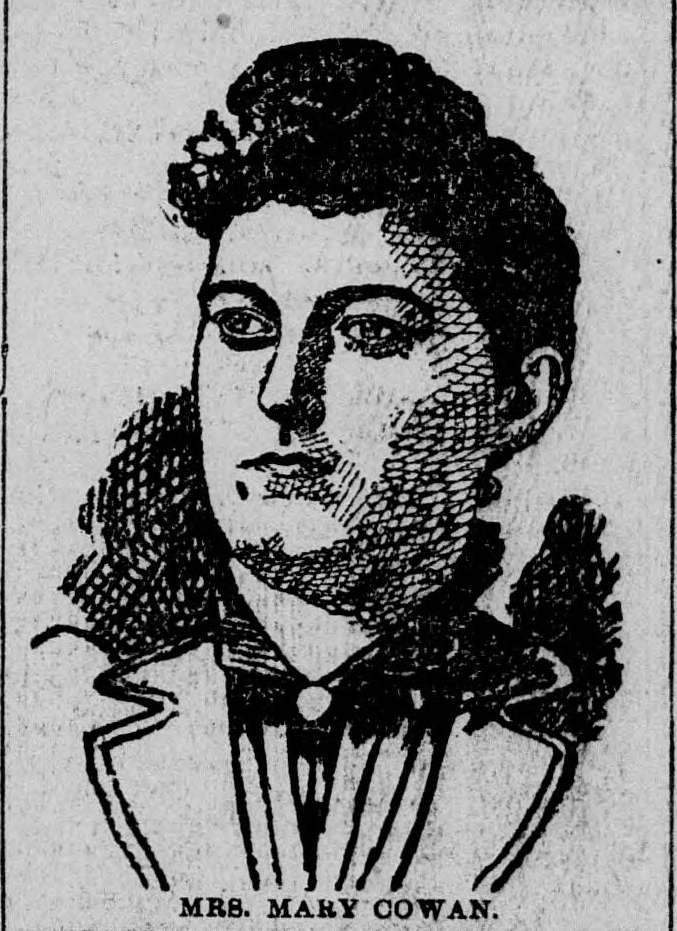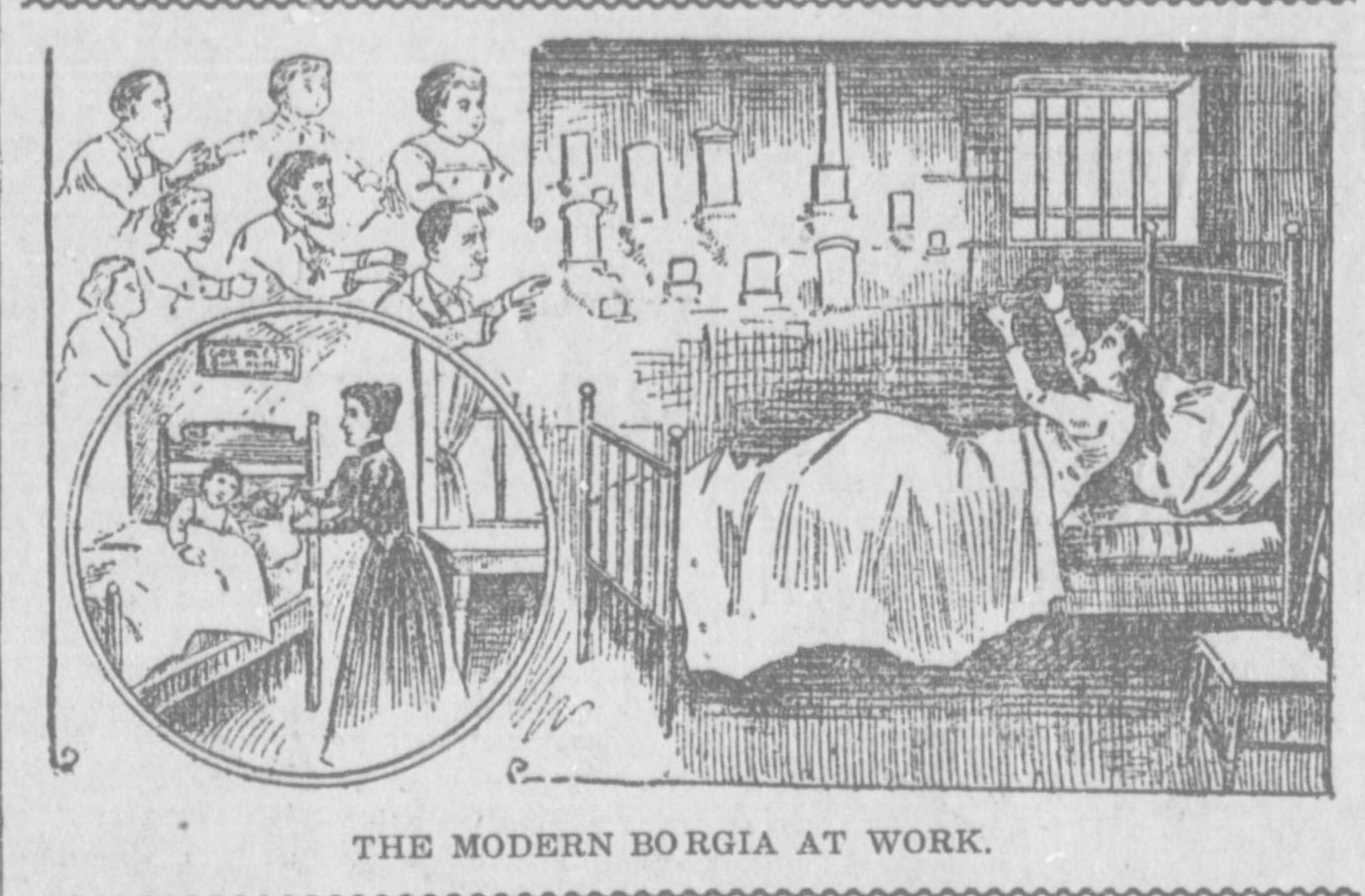
1863 - 1898
Mary A. Cowan
Summary
Name:
Mary A. CowanNickname:
The Borgia of MaineYears Active:
1884 - 1894Birth:
March 08, 1863Status:
DeceasedClass:
Serial KillerVictims:
6Method:
PoisoningDeath:
September 17, 1898Nationality:
USA
1863 - 1898
Mary A. Cowan
Summary: Serial Killer
Name:
Mary A. CowanNickname:
The Borgia of MaineStatus:
DeceasedVictims:
6Method:
PoisoningNationality:
USABirth:
March 08, 1863Death:
September 17, 1898Years Active:
1884 - 1894bio
Mary A. Cowan was born Mary A. Knight on March 8, 1863, in Plymouth, Maine. She was one of several children born to Jonathan F. Knights, who was a veteran of the Civil War, and Apphia B. Knights (née Sidelinger). Mary grew up in a rural family home in Plymouth.
When she turned 20, Mary married a young farmer named Willis W. Bean, who lived in nearby Dixmont. Together, they had three daughters: Gracie, Alice, and Mabel. During their marriage, Willis wanted to become a doctor. Mary supported his ambition and was also interested in medicine. However, the family struggled financially while raising their young children.
In 1884, tragedy struck when Gracie was found dead. A neighbor discovered her and informed Mary, who claimed she was already aware of the situation. After that, Alice and Mabel died within two years from mysterious stomach issues. Despite these deaths, there were no investigations, and the community soon forgot about the tragic events.
Despite these difficulties, Willis continued to pursue his medical career. He attempted to enroll in a dubious school that sold degrees for $25, but this was soon outlawed. Undeterred, the couple planned to go to Ohio for legitimate medical training.
Before traveling to Ohio, Willis told his parents he planned to invest in a farm upon returning. They bought the farm, which was never recorded. The couple borrowed around $200 and went to Ohio. On January 6, 1888, Willis’ parents received a letter saying he had died mysteriously from stomach pain, similar to the symptoms seen in their daughters.
After the death of her husband, Mary moved in with his parents. A short time later, she sold the farm for $2,000. Mary then remarried a laborer, George H. Taylor, who died shortly after from stomach pain as well.
Mary married again to Elias Cowan, a widower with a son named Willis. After their marriage, several of Elias's farm buildings burned down under suspicious circumstances. Soon after, young Willis became ill and died, leading to an investigation into the cause of death.
murder story
Mary A. Cowan, also known as "The Borgia of Maine," was involved in a series of tragic deaths that raised suspicions in her community. The first incident occurred in 1884 when her daughter, Gracie, was found smothered to death. Mary showed indifference when told about the death, stating she already knew. Over the next two years, her other daughters, Alice and Mabel, also died from what were described as peculiar stomach aches. No investigations followed these deaths, even as the community speculated about Mary’s role.

In 1888, after her first husband, Willis W. Bean, died under mysterious circumstances attributed to stomach pain, Mary sold a farm she inherited for $2,000. She later remarried to George H. Taylor, who died from similar stomach pain shortly after. Again, Mary collected contributions from sympathetic neighbors, believing he also had a life insurance policy that did not come through due to unpaid dues.
Mary then married Elias Cowan, who had an eight-year-old son named Willis. Not long after the marriage, a fire destroyed the family's farm buildings. On September 14, 1894, Willis fell ill after eating green apples. Despite a doctor's assurance that he would recover, he died two days later in great pain. Concerns grew around Mary's history as suspicions regarding her actions mounted.
Willis' body was exhumed, and an autopsy revealed high levels of arsenic. This discovery led to Mary's arrest for her stepson's murder. During her trial in 1895, evidence pointed to her as the one who poisoned Willis. Though a young witness initially saw her adding a white powder to his medicine, she did not testify due to her father's concerns. Nevertheless, the prosecutor established that the arsenic levels were deliberate and after deliberation, the jury found Mary guilty.
After her conviction, Mary maintained her innocence and sought to prove it while in prison. She even claimed a private detective had found evidence in her favor. However, her hopes were dashed, and in February 1896, she was sentenced to life in prison. Mary's health declined during her imprisonment, and in 1898, she gave birth to a child, who died shortly after. Mary also passed away later that year. She was buried in her family's plot, alongside her victims.